Introduction
The following projects explore the mark-made-by-hand and the mark-made-by-machine as an approach to understanding the interaction between humans, computers, and the environment. The works practice spans installation, robotics, sculpture, drawing, and performance.
Drawing Operations 1&2 and Omnia per Omnia trace an evolving process of making with robotic units and AI technologies. The evolution forms the basis of human and machine collaboration. By working with machines as collaborators, the drawing and painting artifacts exist as both works of art and research.
The projects by Sougwen Chung explore human and machine co-creation developing in real time; the various operations reflects the processes, possibilities and paranoias of the time in which it the works were created. In part, they are inspired by the Krebs Cycle of Creativity, in which structures creativity as a process of interrelated disciplines; an ecosystem.
"What is ownership? What is work?... How can we move from a production system in which human labor is merely a disposable means ...to a process that depends on and expands connective relationships, mutual respect, the dignity of work, the fullest possible development of the human subject?"
- Adrienne Rich
Omnia per Omnia, 2018

Omnia per Omnia reimagines the tradition of landscape painting as a collaboration between an artist, a robotic swarm, and the dynamic flow of a city. The work explores the poetics of various modes of sensing: human and machine, organic and synthetic, and improvisational and computational. Through a collaborative drawing performance between Sougwen and a swarm of custom-designed drawing robots, the project explores the composite agency of an human and machine as a speculation on new pluralities.
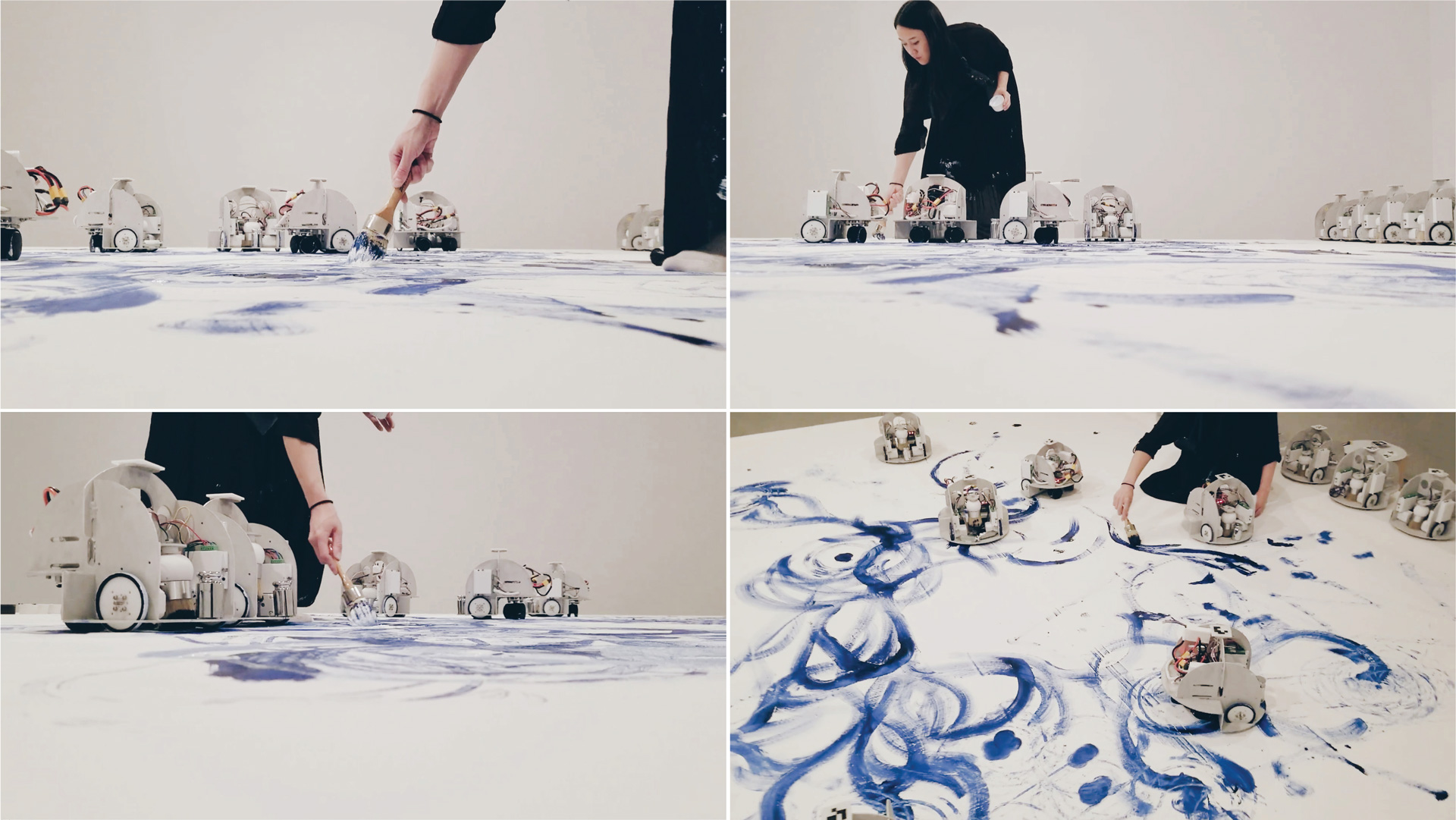
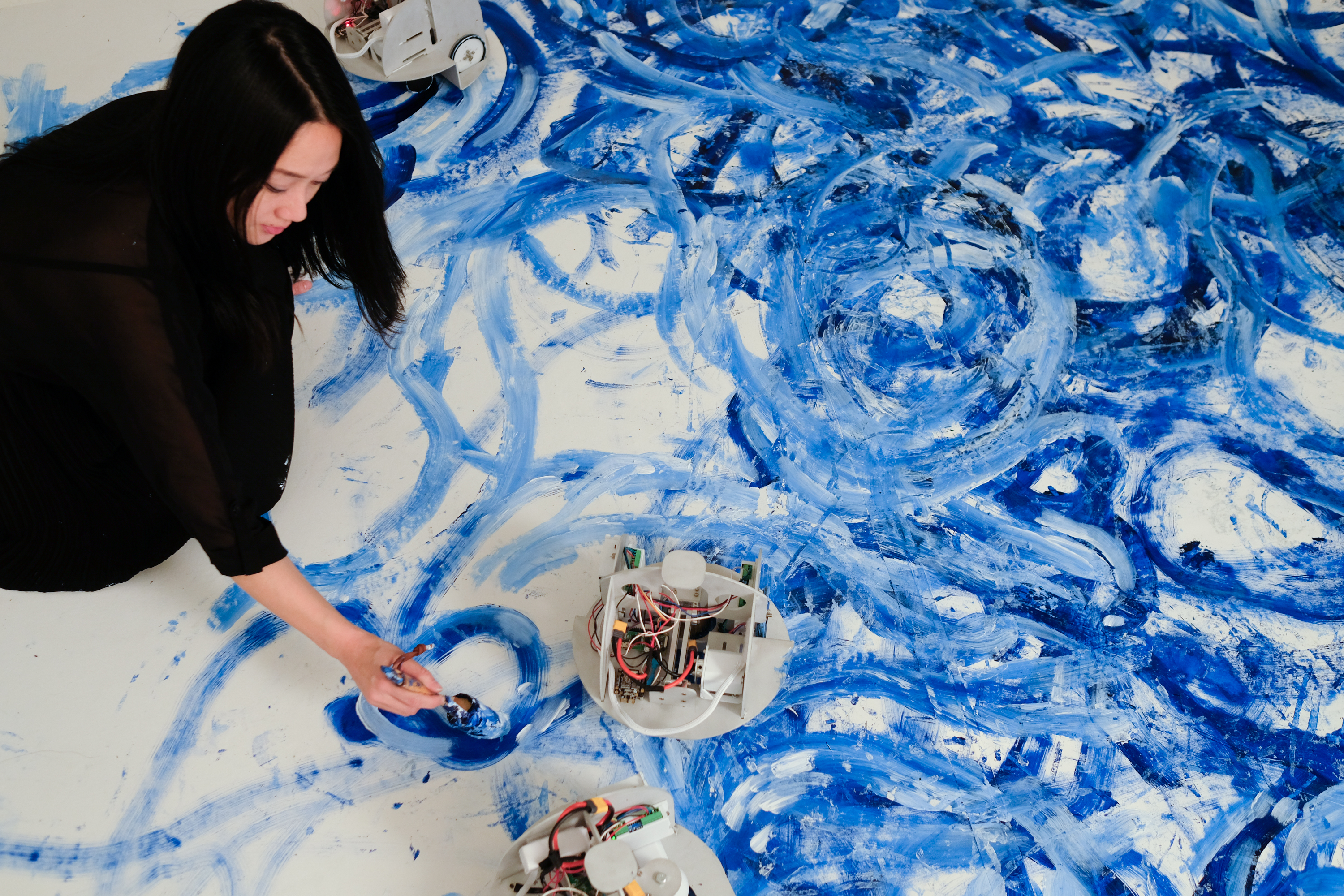
Collaborators: Sougwen Chung & D.O.U.G._L.A.S. (Drawing Operations Unit: Generation_3 Live Autonomous System).
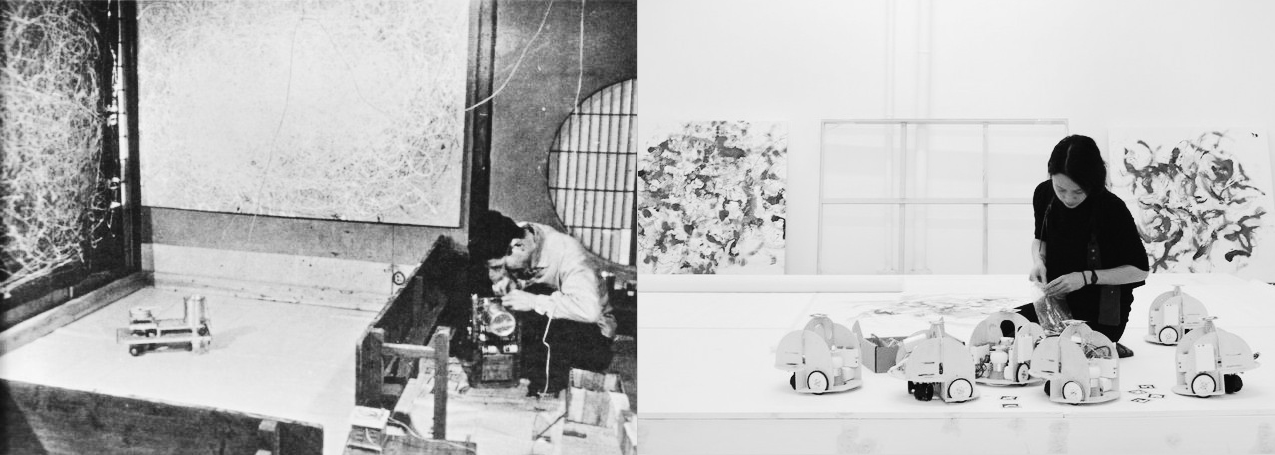
In Gutai Art, "Matter never compromises itself with the spirit; the spirit never dominates matter. To make the fullest use of matter is to make use of the spirit." The matter the artists of the Gutai tradition explored were paint, metal, canvas, with Akira Kanayama utilizing primitive robotics as a remote painter. Today, matter in the form of digital data, biometrics, and robotics has become responsive, interactive. Omnia explores the interplay of today's matter with Spirit as defined by Gutai, a performance of human agency communicated through drawing and mark making.
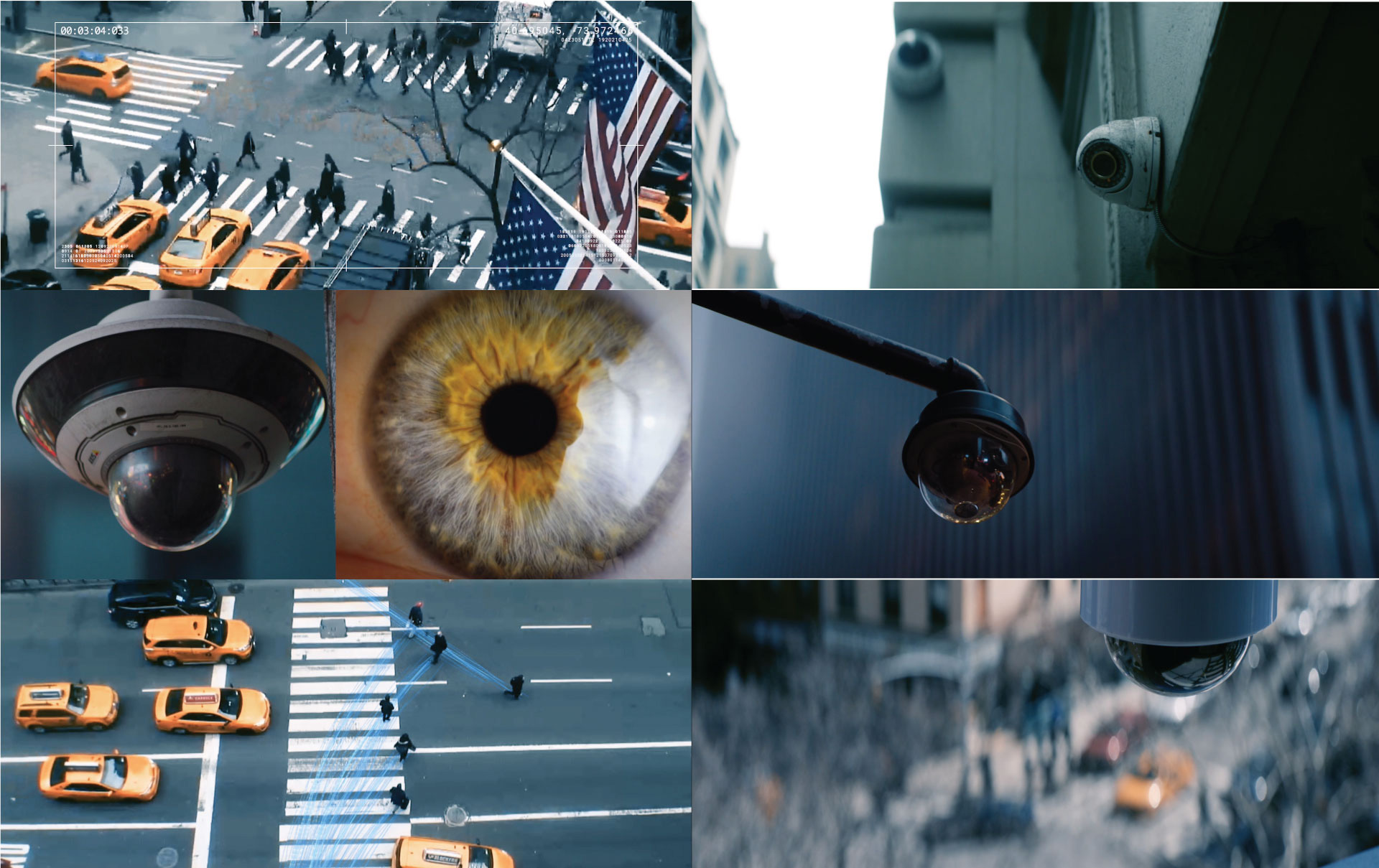
(BIO)METRICS OF THE CITY
The city of New York is a conductor for multi-agent robotic agency. Motion vectors extracted from public cameras are linked to DOUG_LAS collective behaviour in the painting duet. I paint with this system of machines in the creation of an ephemeral portrait of a city in perpetual transition, in constant flux.
SURVEILLANCE APERTURES
What do public cameras see? How do they see us? The positional data for the robots foregrounds the different states of the city via publically available camera feeds. Collecting motion states through the algorithm’s perspective: information about density, dwell, direction and velocity.
WAYS OF SEEING
The philosophical underpinnings of the computer vision algorithm captures the optical flow of a scene as opposed to the single object; it privileges the action of the collective (the behaviour of the crowd) over individual surveillance (face tracking and recognition). Do CV systems that view a scene as a composition of discrete objects shape a sense of modern isolation?
How can computational ways of seeing reframe a collective imagination?
Drawing Operations Unit: Generation 1 & 2, 2014 - 2016
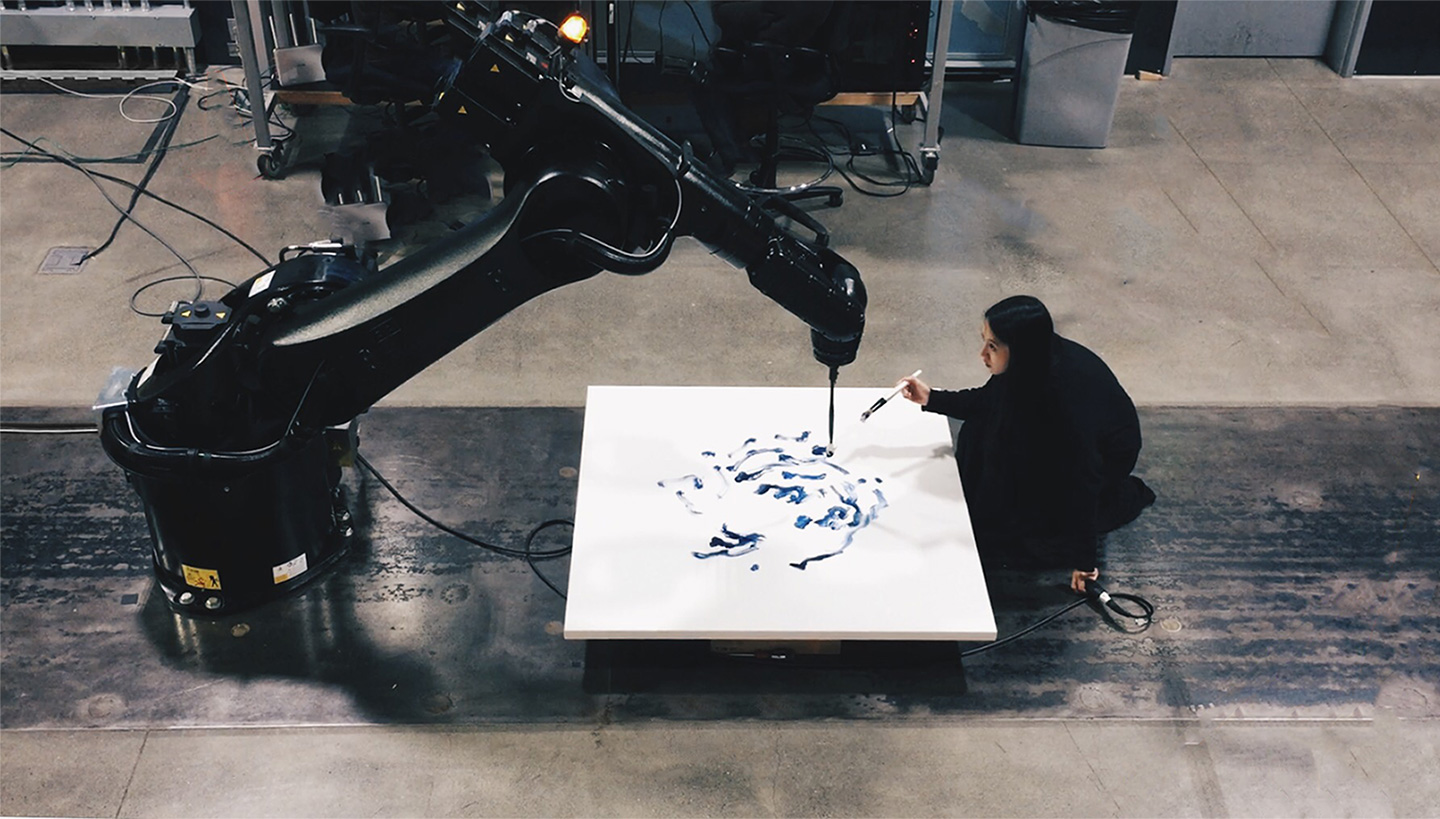
Drawing Operations is an ongoing collaboration between an artist and a robotic arm.
~~~
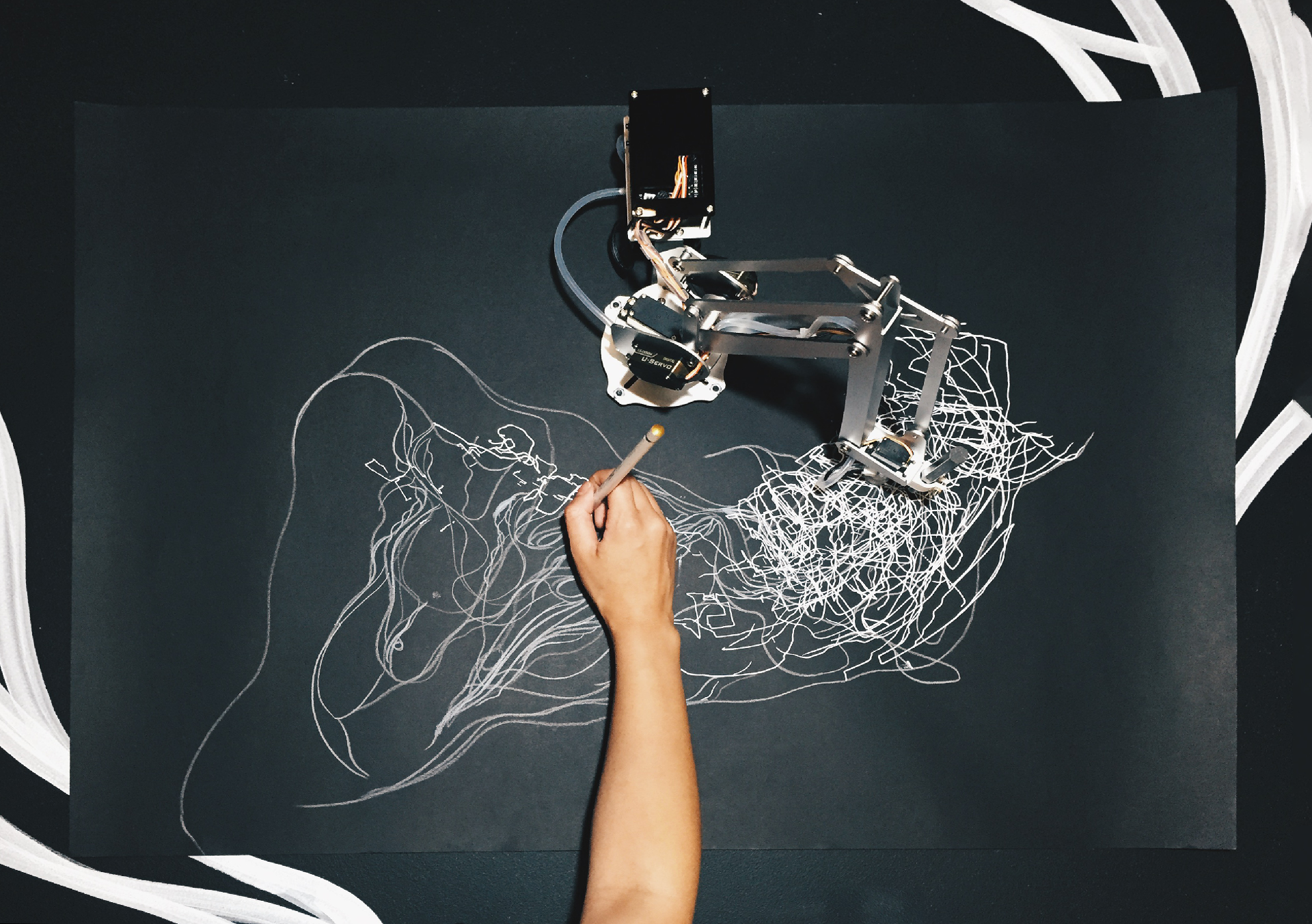
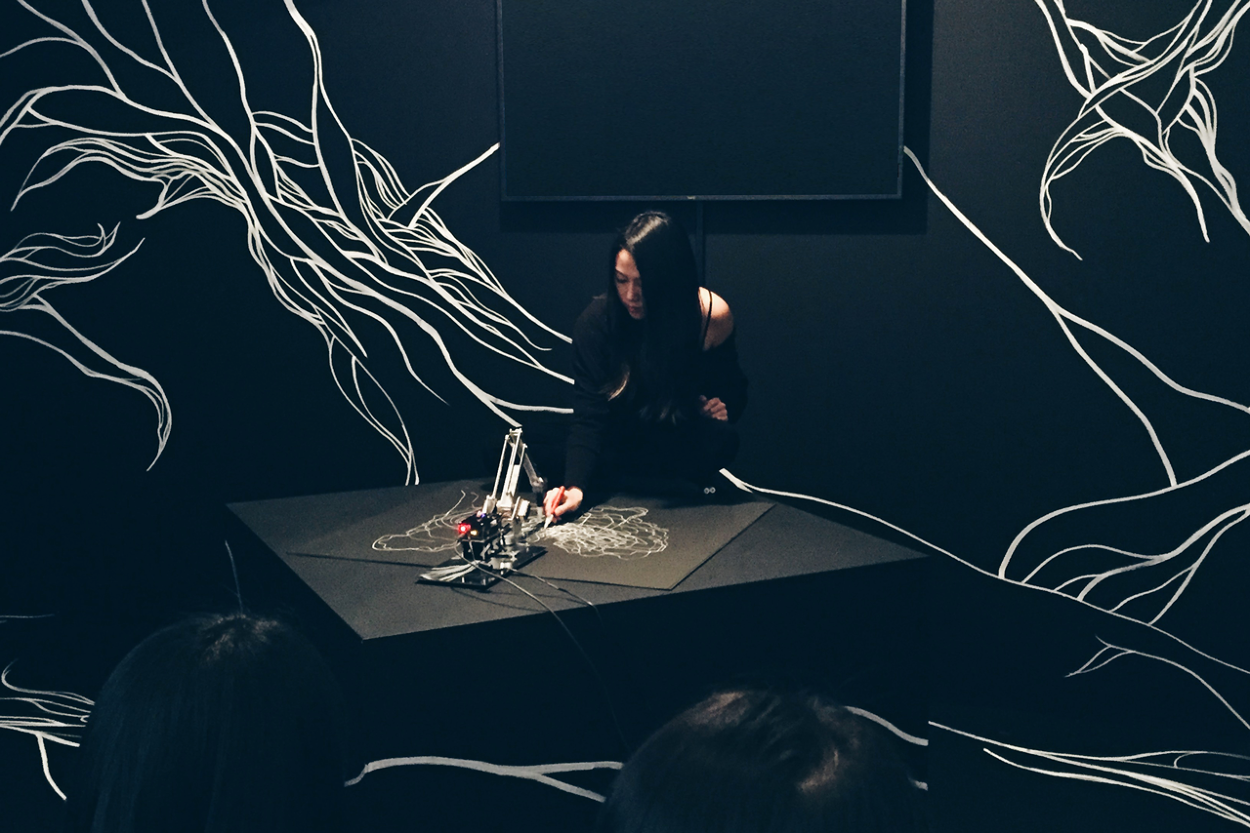
Collaborators:
Sougwen Chung & D.O.U.G._1 (Drawing Operations Unit: Generation_1).
Generation 1: Mimicry
The robot mimics the artist's drawing gesture and vice versa in real time, resulting in a synchronous, interpretive performance. This is the first stage of an ongoing study examining human and robotic interaction as an artistic collaboration.
Collaboration is an exercise in behavioral empathy
Drawing Operations Unit: Generation 1 is the 1st stage of an ongoing study of human and robotic interaction as an artistic collaboration.
In Generation_1, the robotic arm mimics the artist’s gesture by seeing through an overhead camera, and analyzing the movement through computer vision software. The result is a synchronicity of movement between artist and machine, captured as a drawing artifact.
The performance is a process of slowing down, paying attention, and communicating entirely through gesture.
""Perhaps it belongs with the avant-garde abstract expressionist movement, under the context of Clement Greenberg’s theory
on medium specificity in which contingency is accepted as aesthetic sensibility. Rather, this collaborative performance
between the body and a robot arm is musical."
~
The robot mimics the artist like a partner in improvisational round singing performance. It is an AI that embraces every glitch, bug, and error. The drawing session, without pre-established harmony, frees itself from aesthetic constraints, while also examining the essence and phenomenon of beauty at the same time."
Generation 2: Memory
Drawing Operations Unit: Generation 2 involves robotic memory.
It is an initial exploration into the machine learning the drawing style of the artists hand.
The robotic arm’s behaviour is generated from neural nets trained on the artist’s drawing gestures.
In a sense, the robotic arm has learned from the visual style of the artists previous drawings and outputs a machine interpretation during the human / robot drawing duet. Gestures from previous drawings are collected and saved, existing as a memory bank for D.O.U.G._2. Analysis of visual style of historic artists to translate into gesture, as well as colour palette as a collective memory bank from which robotic arm will be able to select.
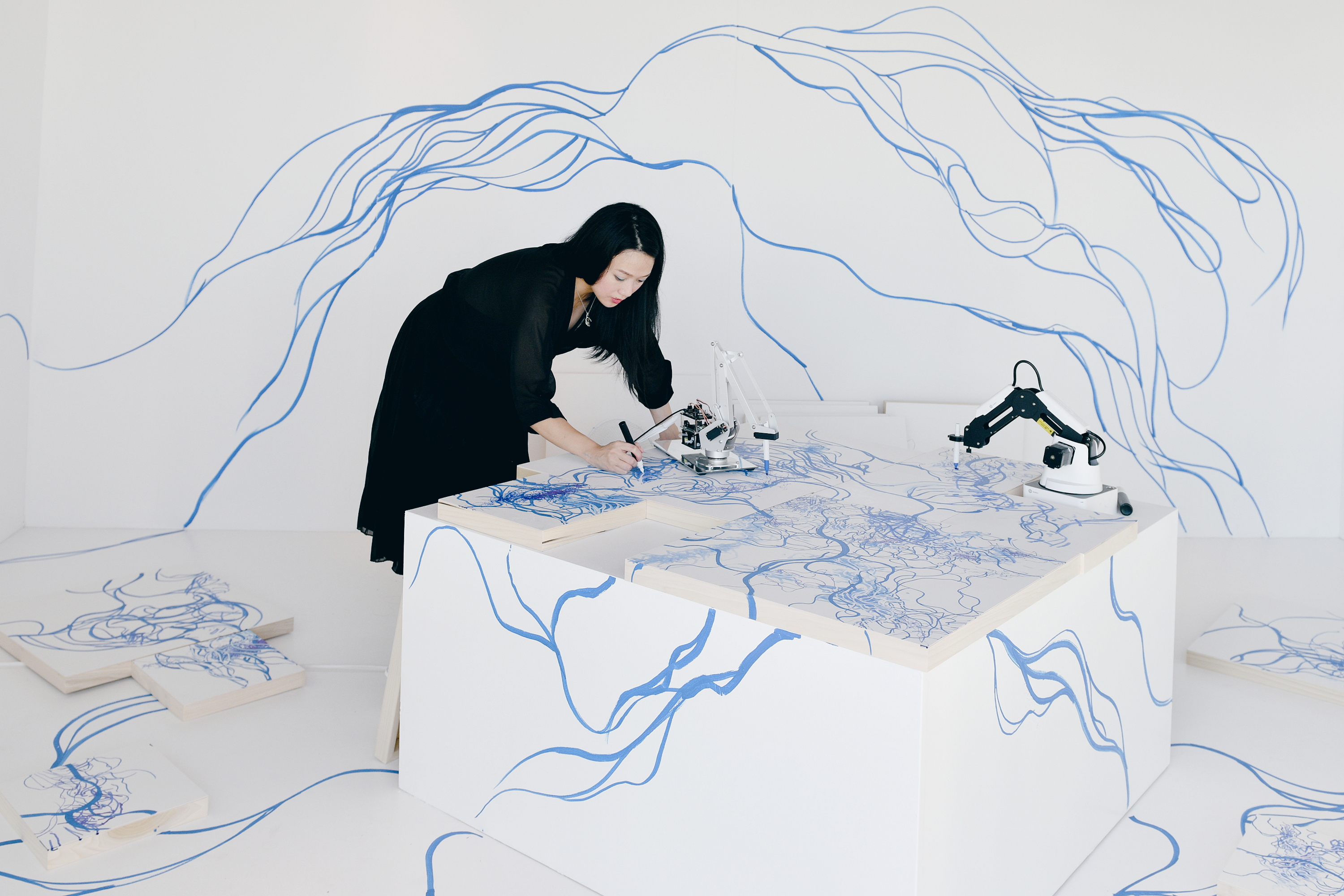
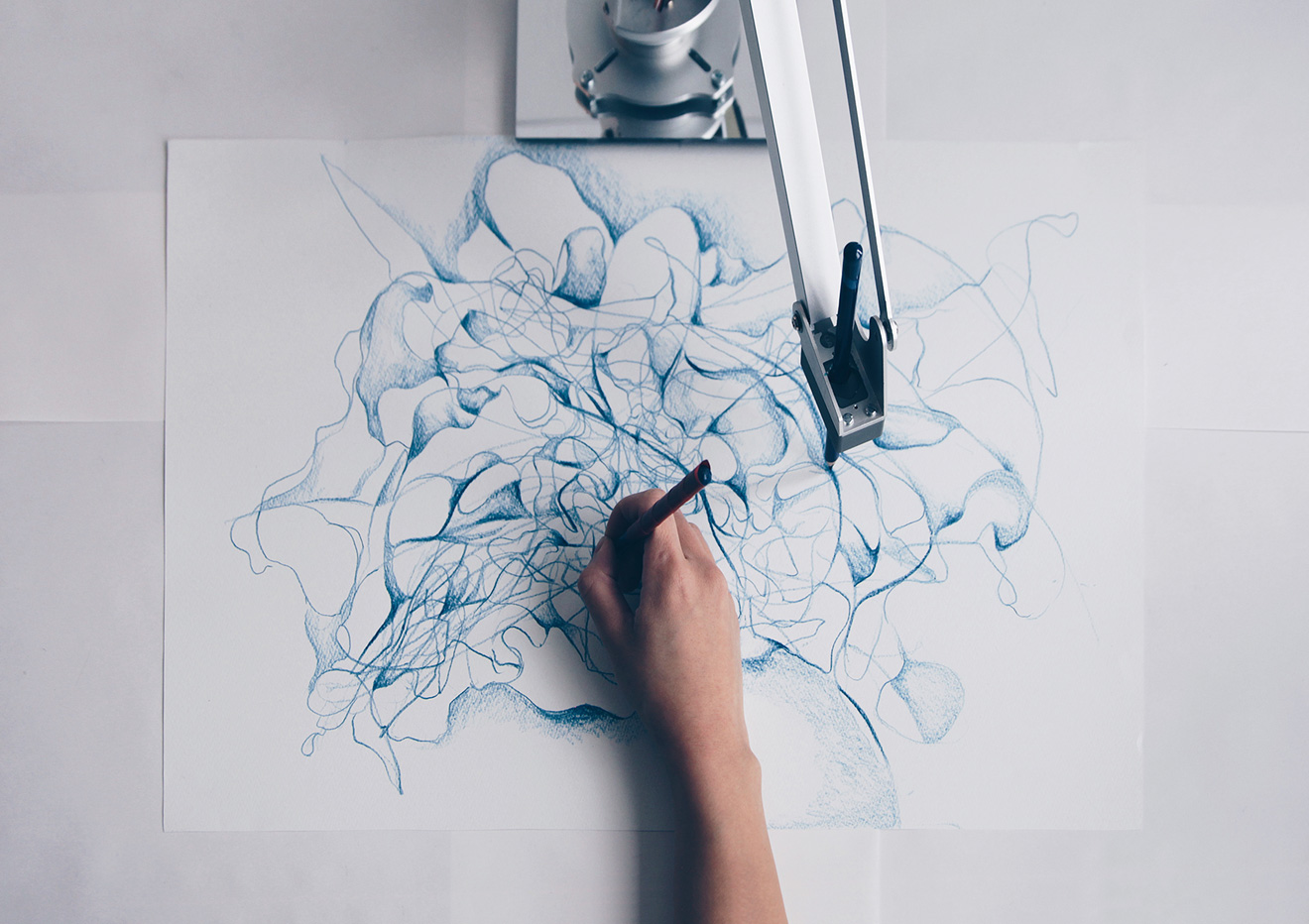
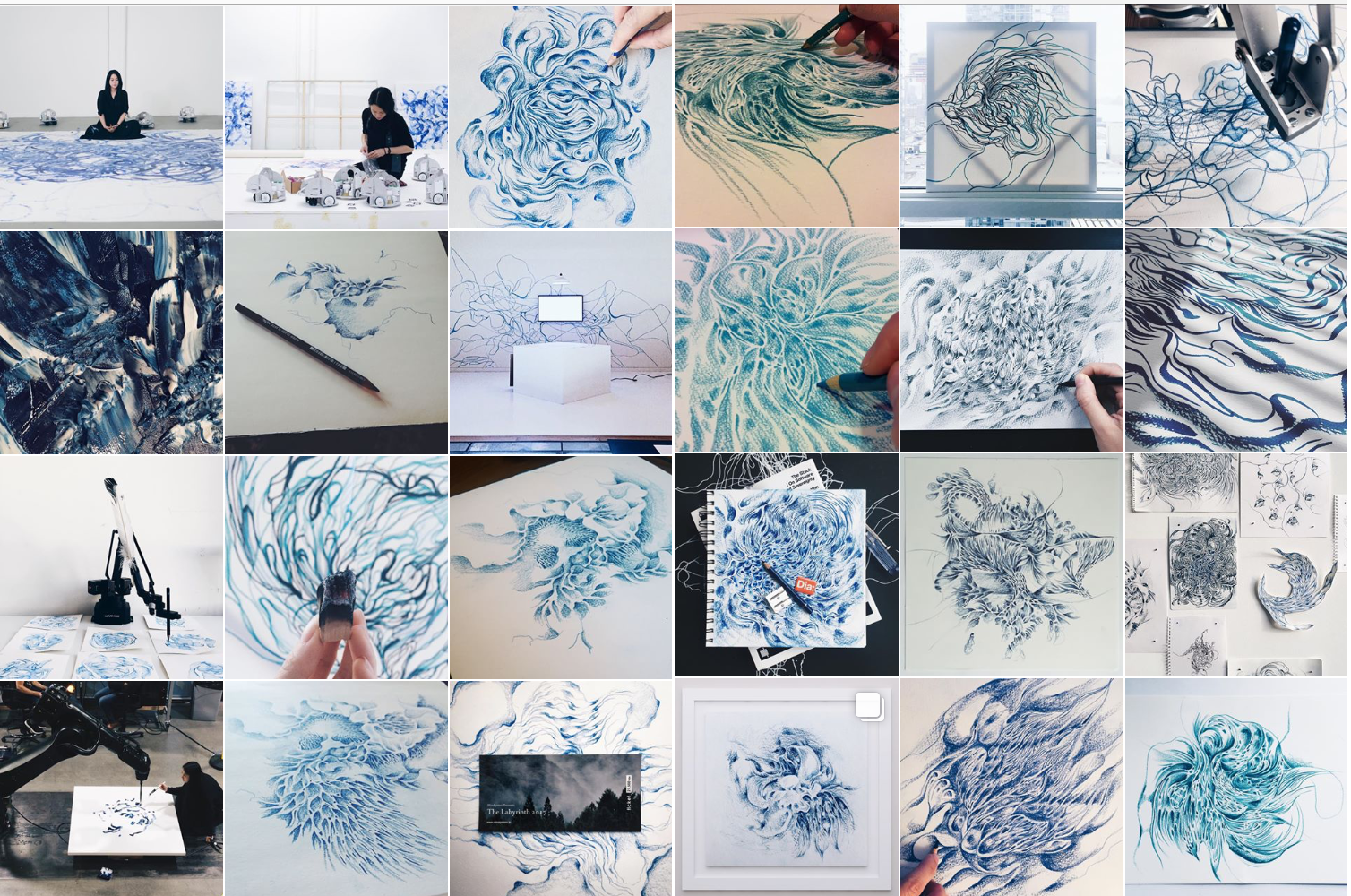
Collaborators:
Sougwen Chung & D.O.U.G._2 (Drawing Operations Unit: Generation_2).